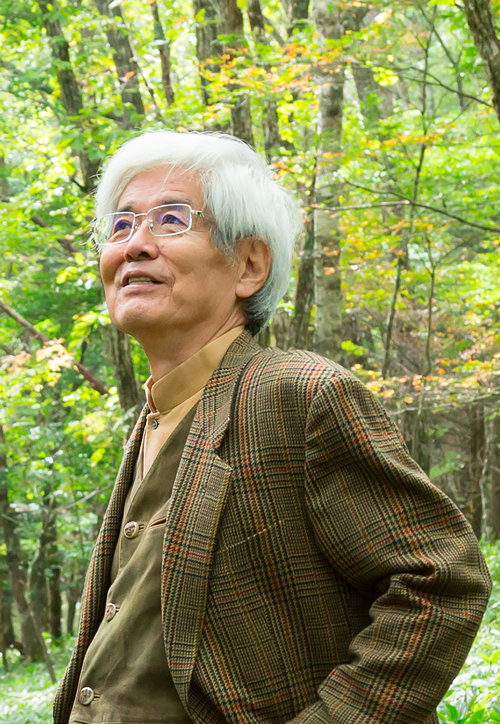contents
Supervisor
For the Insects exhibition
Adults are at best indifferent to insects, and sometimes even loathe them. But children are different, and they love insects, perhaps sensing an intimacy with bodies smaller than their own.
Once you understand the excitement of watching insect, the action becomes addictive. People might find this a strange passion, but I urge all of you to liberate yourselves from prejudice and look at insects once again. You will find them wonderful and fascinating.
I can understand why some people hate insects, since I dislike spiders and centipedes. But not all insects are the same. I never cease marveling as I look at their details through a microscope. Our sensitivities have been built up slowly over the 3 billion years of life on earth, but as humanity has always dwelt within nature, we should seek harmony with it.
Consider the leaves on a tree branch. By what rules are they arranged? The sun rises in the east and moves daily to set at nightfall in the west, so how it is that the tree can fix its leaves to receive the best exposure to light? The trees we see before us will answer these questions.
As children grow up they are taught that thinking entails the answering of questions, but isn't it really the other way around? Life has continued over 3 billion years because it has confronted, then solved the problems that it has been presented with. What we have in front of us, I believe, are the answers to questions once posed. It is as if we see the lists of answers in school books, and then ask what are the questions that gave rise to them. I hope from now on you will consider insects in such a frame of mind.
Takeshi Yoro
Profile

Takeshi Yoro
Born 1937, Kamakura City, Kanagawa Prefecture. After graduating from Faculty of Medicine, Tokyo University, in 1962, joined its anatomy laboratory. Became Professor in the Faculty of Medicine, retiring in 1995 as Professor Emeritus. Numerous publications include Karada no mikata (how to look at the body), awarded the Suntory Prize 1988; Katachi wo yomu (reading forms), 1986; Kaibo-gaku kyoshitsu e yokoso (welcome to the anatomy classroom), 1993, Nihonjin no shintaikan (Japanese views of the body), 2004; Yuino-ron (brain only theory), 1989; Baka no kabe (What A Fool Believes.), 2003; Jibun no kabe (wall of self), 2014; Yoro Takeshi no daigenron (great statements by Takeshi Yoro), 2011; Shintai junrei (body pilgrimage), 2014 and Yuigon (testament), 2017. His work continues on issues related to social change, particularly change caused by loss of bodily awareness, using biological insight obtained from observation of insects.

